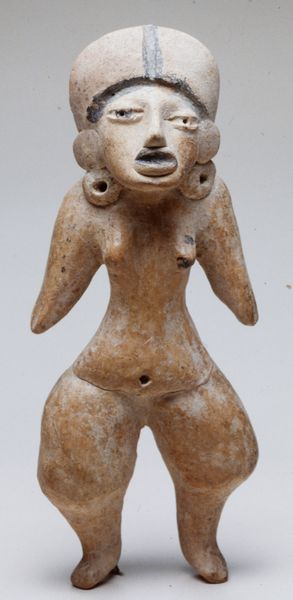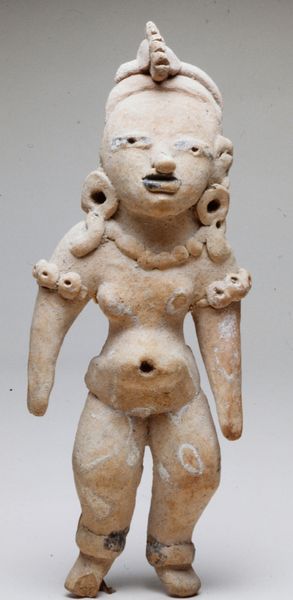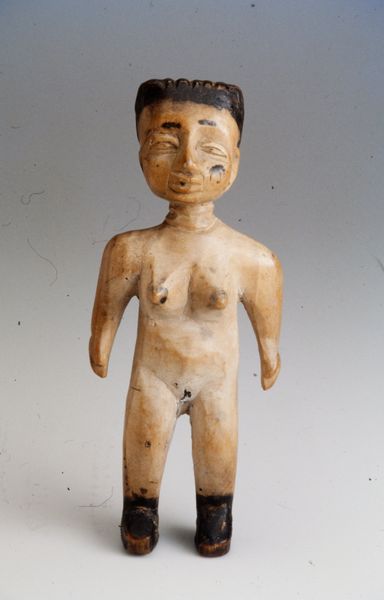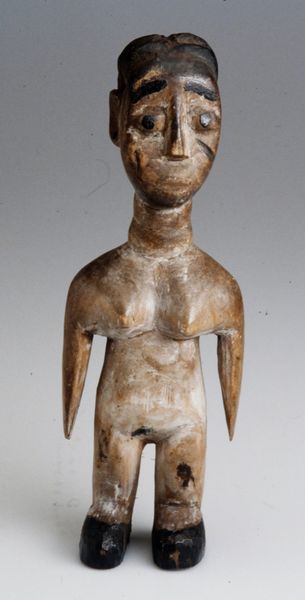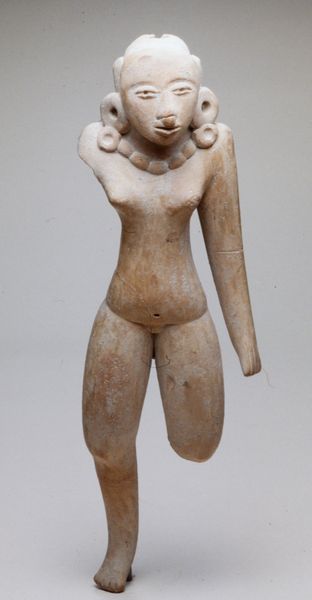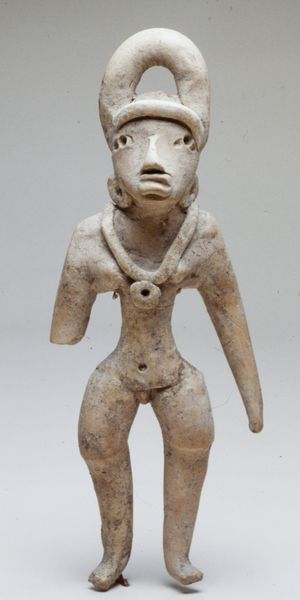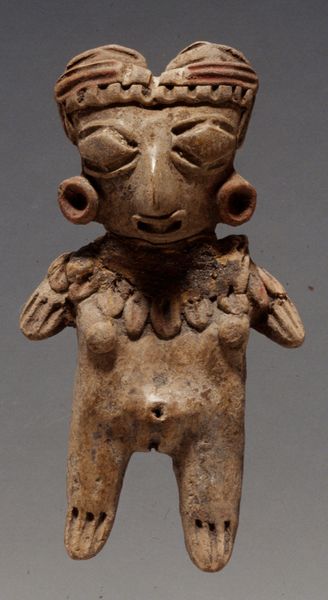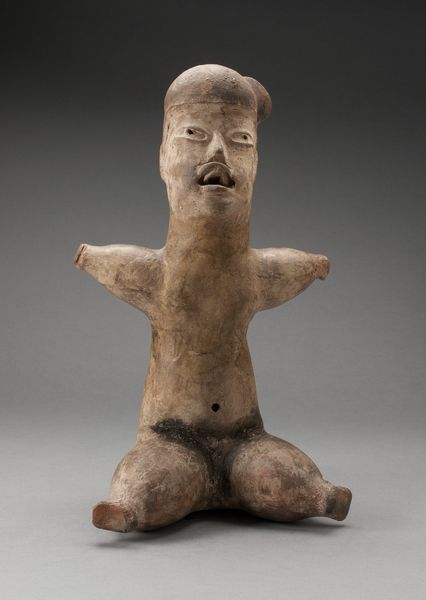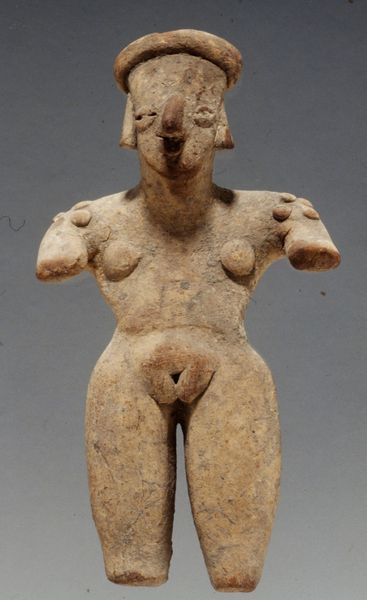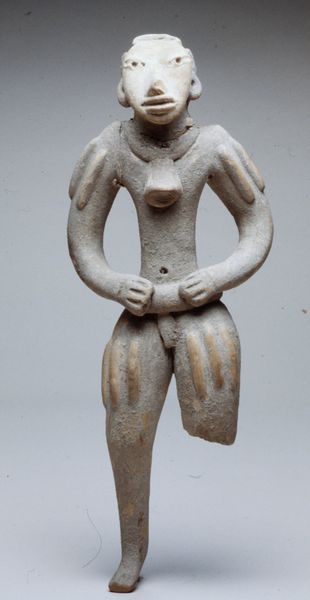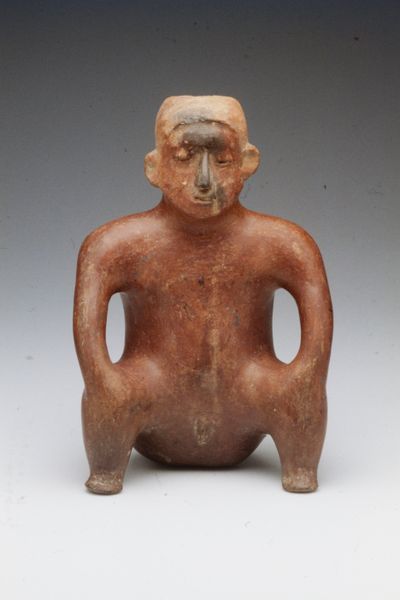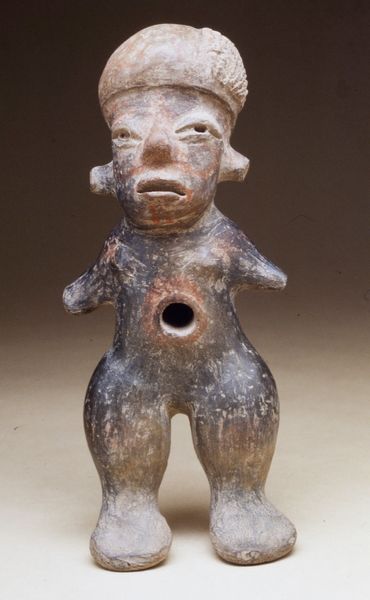
ceramic, sculpture, terracotta
#
sculpture
#
ceramic
#
figuration
#
sculpture
#
terracotta
#
indigenous-americas
Dimensions: 12 1/2 x 7 1/4 in. (31.8 x 18.4 cm)
Copyright: Public Domain
Curator: This is a ceramic seated figure, created around the 8th century by the Tlatilco people. Editor: There’s something deeply unsettling about this sculpture. Its face is mask-like, the clay a burnt reddish-brown that gives it an earthy, almost primordial feel. It reminds me of archaic Cycladic sculptures. Curator: The Tlatilco were masters of ceramics. Their figures are incredibly diverse, representing various aspects of daily life, rituals, and beliefs. What reads as unsettling to you might be rooted in a completely different visual language than what we are accustomed to. Editor: I understand. And yet the almost grotesque elongation of the head, those exaggerated, rectangular eye sockets, and the tiny mouth... They elicit a reaction. What did these features signify? Was it simply aesthetic preference, or did it relate to social status or spiritual power? Curator: We can interpret this figure as an embodiment of fertility and life-giving energy, which would have been important values within this Mesoamerican society. This symbol could be interpreted through, say, Carl Jung’s theory of archetypes, to be reflections of a broader symbolic language, something inherent to our shared psychological experience, though colored through specific cultural expression. Editor: I think situating this within an intersectional, pre-colonial indigenous framework provides a more nuanced understanding. For instance, were these figures used in gendered rituals? Was the depiction of the body influenced by societal power dynamics? Thinking critically about how gender, class, and spirituality intertwined provides crucial context. Curator: I agree with the need for contextual nuance, of course, but the fundamental image retains its powerful presence beyond purely cultural contexts. This is because our shared visual lexicons allow us to respond viscerally. This response becomes a point of departure that lets us dive deeper into specifics. Editor: Ultimately, it pushes us to ask more complex questions about representation, identity, and the very different worldview encoded within the artwork, doesn't it? Curator: It does. It reminds us how symbolic languages, even across vast cultural distances, can carry profound emotional weight and resonate unexpectedly within us.
Comments
No comments
Be the first to comment and join the conversation on the ultimate creative platform.
